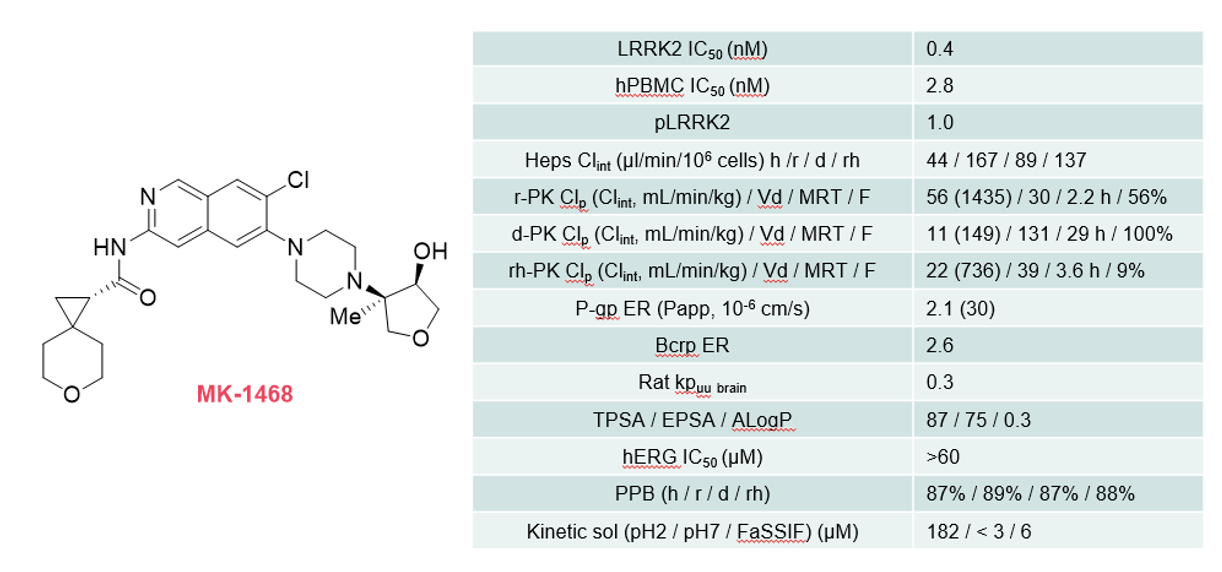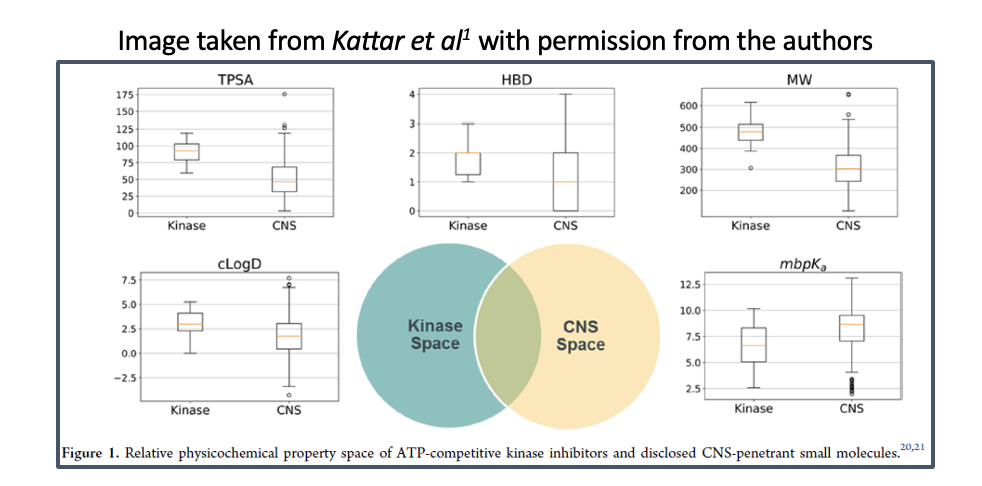By Jon Powell (Group Leader, Chemistry)
Parkinson’s Disease (PD) is an age associated neurodegenerative disorder that affects over 6 million people worldwide. It’s characterised by the progressive degeneration of dopamine neurons in the substantia nigra which leads to a reduction in the levels of dopamine, an important neuromodulator, in the brain. There is no cure for PD, with current drugs such as Levodopa providing symptomatic relief only. Current treatments are also associated with adverse effects including confusion, hallucinations and impulsive compulsive behaviour. Taken together, there is a significant unmet clinical need for curative or disease-modifying therapies for PD.
Merck are tackling this head on and have been working on the development of leucine-rich repeat kinase 2 (LRRK2) inhibitors for the treatment of PD for many years. Their goal being to discover a low-dose, kinase selective, CNS penetrant, type-1 (ATP competitive) LRRK2 inhibitor. Their hard work finally paid off and culminated in the identification of MK-1468.1

MK-1468 was found to exhibit excellent potency against LRRK2 while also retaining a 100-fold selectivity against 265 other kinases, which, given it is a type-1 inhibitor and the ATP binding domain is highly conserved across the kinome, is a remarkable achievement.
The disparity between CNS and kinase physicochemical property space makes the development of CNS penetrant kinase inhibitors a challenge. Therefore, the team at Merck utilised pre-synthesis in silico property predictions (CNS MPO), predicted EPSA and machine learning models for P-gp efflux to increase the likelihood of achieving good CNS penetration and robust PK. In acknowledgement of the fact that compounds would likely border permeability and efflux transporter susceptibility they fast-tracked compounds to in vitro P-gp and BCRP efflux assays, and when carrying out initial rodent neuro PK studies obtained Kpuu measurements. This strategy ensured that only compounds with desirable CNS properties were progressed.

MK-1468 was shown to be low risk for genotoxicity and mutagenicity and therefore progressed into preclinical enabling studies including rat PK/PD experiments which provided evidence that the compound was able to produce a dose dependant reduction in LRRK2 (pSer935) phosphorylation. Subsequent rat telemetry studies and a 7-day tox study in rhesus monkey did not reveal any physiologically relevant changes or adverse clinical observations. The totality of the data has meant that MK-1468 has been advanced to GLP toxicology studies, the results of which will be published in due course.
The interest in developing CNS penetrant kinase inhibitors has grown in the past decade as more kinases continue to be validated for neurological conditions such as Alzheimer’s disease and PD. This presents an interesting challenge to medicinal chemists working in the CNS field as they must bring together two distinct areas of physicochemical space and make it work within a single drug molecule. The good news is that this challenge is not insurmountable. As Merck so ably demonstrated, with judicious planning and putting in place a clear strategy to identify CNS penetrant scaffolds from the get-go, it is possible to successfully deliver candidates that traverse both kinase and CNS drug space.
Domainex has extensive experience in the CNS field of drug discovery, get in touch to find out how we can support your project.
Reference:
- Kattar et al. Discovery of MK-1468: A Potent, Kinome-Selective, Brain-Penetrant Amidoisoquinoline LRRK2 Inhibitor for the Potential Treatment of Parkinson's Disease. J Med Chem., 2023 Nov 9;66(21):14912-14927